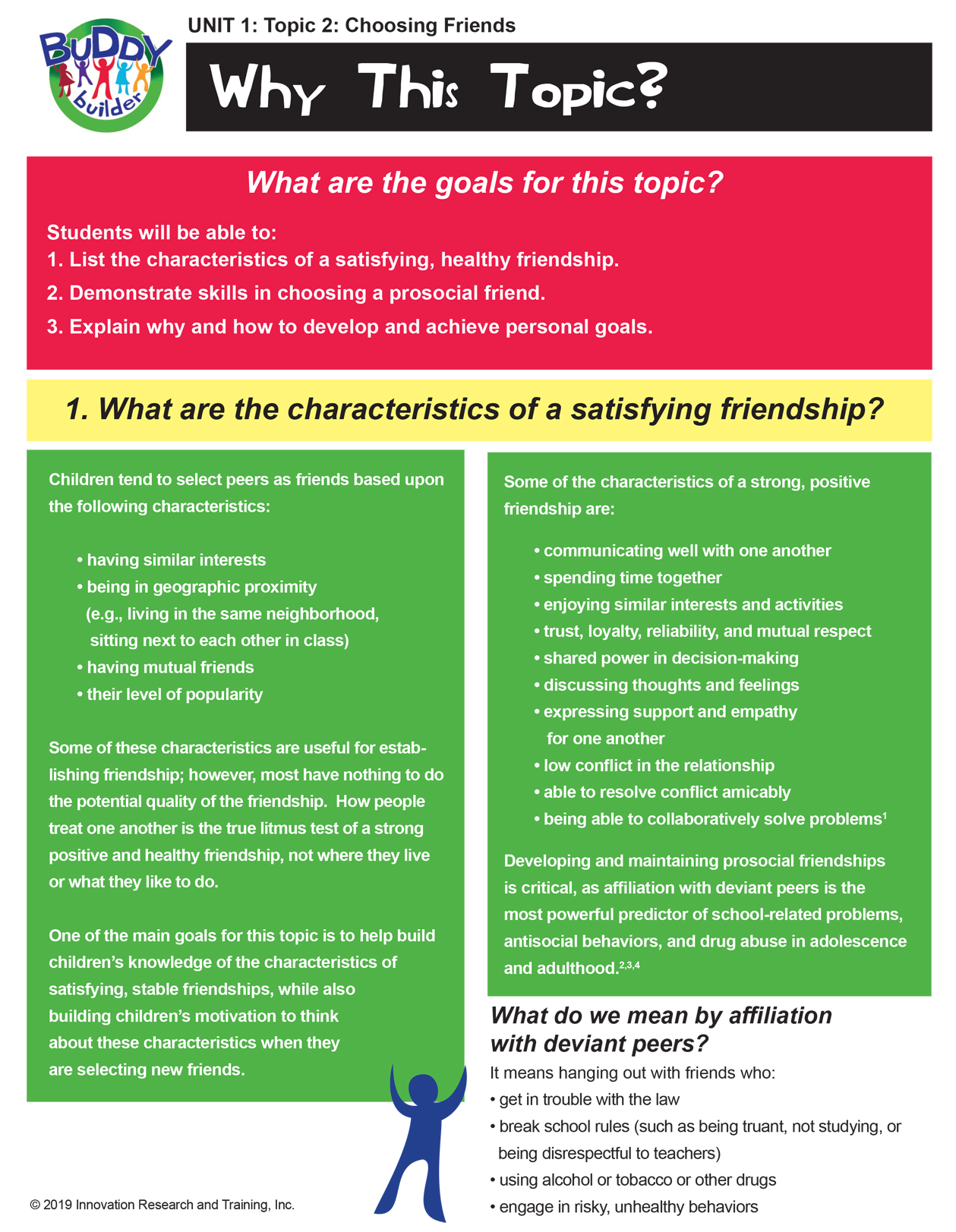PROGRAMS DETAILS
Why is the Buddy Builder program unique and ideal for teaching SEL in out-of-school settings?
Most SEL programs involve lectures, group discussions, and role plays that are conducted during the school day. Students are taught social and emotional skills that are related to making and keeping friends, and getting along with others, but may not be directly related to real-world situations. Also, the generalization in skills may be left up to the creativity and motivation of each individual classroom teacher.
Buddy Builder was designed by experts in out-of-school time to teach and master SEL skills to students in authentic social situations, while completing fun and engaging enrichment activities that promote creativity, involvement, and social interactions.
Building buddies, in other words, making friends and being a good friend is the primary goal of the program – one that resonates with the interests and goals of most elementary school children.
How does the Buddy Builder program work?
Teachers teach 4 core activities for learning a social-emotional skill in each Unit.
In addition, teachers pick 1-3 activities to do with their students from a menu that provide students with authentic enrichment opportunities to practice a new skill embedded in a fun afterschool activity.
Teacher can also choose to do extension activities that they can do with their students and their families.
How long is the program?
A minimum of 6 weeks
Teachers may choose to spend more than one week on a Unit
How often can the program be used?
There are enough activities that the program can be done every day.
How often can the program be used?
Activities vary in length from 30 minutes to an hour.
Who teaches the activities?
Activities are led by a trained afterschool teacher.
What are the Units in the program?
There are six Units focused on building strong and supportive friendships, a goal that is highly relevant, meaningful, and developmental appropriate for elementary school students.
1. Introduction to our program including setting program and personal goals, making introductions, and selecting friends.
2. Choosing friends including thinking about what makes a friendship satisfying, healthy, and supportive
3. Active listening focuses on being a good listener to learn about others
4. Being a good conversationalist is needed to be able to develop and maintain close, positive friendships
5. Emotion recognition helps students identify feelings in themselves and others which helps in building empathy skills
6. Emotional knowledge helps to support flexibility in friendships by understanding that people can have more than one feeling at a time and that feelings may change
What curriculum domains are included in the Buddy Builder program?
Four required core activities that are designed to be taught for each Unit:

Huddle Up: brief introduction to the social-emotional skills goals of the Unit through discussions and role playing

Community Service: practice SEL skills taught in the Unit while learning, thinking, and talking about the communities in which students live

Inspiration Station: students imagine successful, future versions of themselves

Physical Activity: practice SEL skills in a physical activity
Teachers pick 1 to 3 enrichment project-based activities for practicing SEL skills in each Unit:

Music: such as music history, improvisation, music education, instrument making and playing, different musical genres, and cultural music

Arts & Crafts: such as drawing, painting, bookmaking, and handicrafts that students can display or take home

Performing Arts: including the creation and delivery of performing arts such as script writing, role-playing, acting, directing, interviewing others, and learning about the history of TV, radio, and other media
Extension activities bring members of the community to the afterschool setting to share in the learning process:

Family Time: a generic and customizable Family Newsletter to send home containing suggestions of presentations, demonstrations, performances, or activities to do when family members attend the program to showcase studentsâ new SEL skills

Guest Speaker: sample invitation letters to send to a guest speaker that includes suggested talking points in order to focus presentations on issues and topics relevant to the SEL skill goals in the Unit
What planning and training resources are included in the Buddy Builder program?
Why This Topic?: Information sheets written for teachers to explain why a particular SEL skill is important for students to learn. Research findings are distilled and explained in laymenâs terms, and suggestions are provided about how teachers can support the development of each skill in everyday interactions with their students.
Scripted Instruction Cards: Handout that provides instructions about how to introduce, lead, and debrief from an activity. Each Instructions Card also suggests ideas for variations on the activity, in case teachers have students in their group who are older, younger, developmentally or intellectually disabled, or for whom English is a second language. In addition, when relevant, teachers are provided with suggestions for continuations and extensions of an activity, in cases where they would like to extend the activity over time.
Week-at-a-Glance: List of the goals and suggested activities for each week.
Sample Weekly Calendar: Suggested calendar of activities for leading each activity in each five-day Unit.
Materials List:Information sheet of a comprehensive list of materials needed to facilitate all of the activities in a Unit.
Fidelity Checklist:Checklist including all of the activities in each Unit and spaces to note any adjustments or modifications made to any activities.
Weekly Probes:Two-minute assessments that can be administered to students to assess whether they have mastered the skills for a given unit.
Videotaped training videos:Â Brief 2-7 minute videos that show an afterschool teacher demonstrating each activity
Activity Handouts for Students (when relevant)


How does someone learn how to teach the Buddy Builder program to students?
Demonstration Videos: Teachers can watch brief videotaped training videos that show an afterschool teacher demonstrating teaching an activity to students
Webinar: Brief online webinar describing the goals, history, and composition of the program
Instruction Cards: Read the scripted instruction cards
Contact Us: Contact the program developer who will be available to answer questions.

